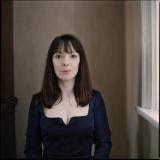
I have to admit that the world of art academia which also happens to be “mine” is… sometimes out of touch with, well, everything but the very narrow topics that you can base a PhD on. Academia is like a cocoon in which one can live self sufficiently for long periods of time without much real contact with whatever might be happening beyond the book lined partitions. No matter how much we claim, within the confines of a seminar, that our research is aimed at a wider public or will make a real difference outside of universities, we fail to realize that this “wider public outside of universities” doesn’t know what we do and might actually not care. Why should they want to read 300 pages on the preservation of chocolate sculptures, the motif of walking in visual art and the metaphysical meaning camouflage in architecture. I know I would gladly pour over these morsels of research because it’s just so interesting. How do they come up with such obscure topics? How, exactly, is this supposed to make a difference for the guy behind the counter at the off-license, my GP or my grand-mother? But if you don’t step out of your cocoon often enough, you start taking for granted that everybody can define Modernism at the drop of hat and that nobody could possibly sport a mullet without irony in this day and age.
My wake-up call came last week. You see, my circle of friends in London is comprised mostly of graduate students of art history and cultural studies so the re-hang of Tate Modern’s permanent collection has been at the forefront of our discussions lately. Yes, yes, we really talk about it. A lot. Too much. But it’s important. Really.
On a sunny day, while picknicking in Russel Square after our annual feedback meetings, we were having just such a discussion. It couldn’t have occurred to any of us at the time that, had one of the mildly exhibitionist sunbathers overheard our conversation, he would certainly have thought “What a bunch of ponces! What the hell are they talking about? Why are they not paying any attention to my much too small animal print bathing costume?” Indeed, we wouldn’t have noticed his overexposed, tanned to a crisp nudity because we were aghast with disbelief over the fact that a Lichtenstein picture had made its way in one of the States of Flux galleries! Yes! The wing devoted to the early twentieth-century movements Cubism, Futurism and Vorticism! How ridiculous, how unacceptable. We all agreed and there a minute of silence brought on by the shame that such a thing could happen in such an important museum…
A few days later, I found myself relaying that vital information to S, thankfully not of the art world. I said “I can’t believe a Lichtenstein picture made its way in one of the States of Flux galleries! Yes! The wing devoted to the early twentieth-century movements Cubism, Futurism and Vorticism! How ridiculous, how unacceptable.” Within a second, his expression slipped from blankness to utter amusement. He didn’t even have to reply “Ooooh! You don’t say. Now that’s really horrible.” The smirk on his face was enough to make me realize that certain concerns don’t have much currency beyond the academic cocoon…
Image: © Estate of Roy Lichtenstein/DACS 2002


2 comments:
Les intellectuels sont une composante nécessaire et utile de la société. Les milieux intellectuels (cocons) sont des terreaux fertiles essentiels à l’éclosion d’idées et de concepts nouveaux servant de toiles de fond à l’évolution d’une société.
« Il n'y a pas d'exercice intellectuel qui ne soit finalement inutile ». (Jorge Luis Borges)
Toutefois, l’intellectuel qui ne sort pas de son cocon devient vite un « intello », c’est-à-dire une personne dont les opinions sont déconnectées de la réalité.
« Deux intellectuels assis vont moins loin qu'une brute qui marche ». (Michel Audiard)
Ce 'S' est evidemment un connard, un idiot, un anglais.
Post a Comment